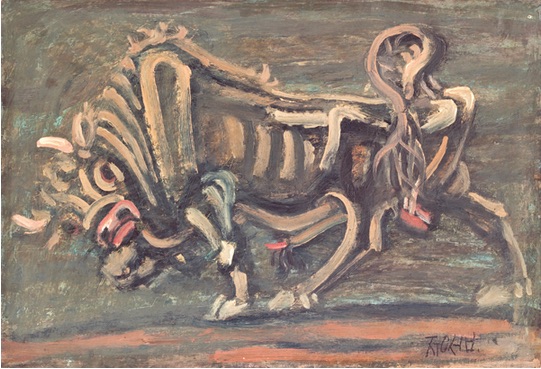![“The Bull” can be viewed at the Seoul Museum in Buam-Dong. [Soyoung Moon/AP]](http://www.jstudentboard.com/reporter/wp-content/uploads/2015/03/JSR_March07_Bull-300x205.jpg)
Born in 1916 in what is now North Korea’s South Pyongan Province, Lee studied painting for a year in Japan and returned to Korea in 1936. During the Korean War, he traveled through the South and spent time in Busan, Jeju, and Seoul. Lee, like many others who lived during the Japanese occupation, World War II, and the Korean War, suffered from malnutrition that contributed to his death at the age of 40.
Seo Hye Ja, who also lived through this era, said of the artist, “I do feel admiration for his paintings but I feel sympathy more because he could not see his family often and he died at such a young age.”
After viewing his 1954 piece “The Leaving Family” in the Hyundai art gallery, Seo reflected, “Back then, people had no proper food… Some people did not have any food to eat and I remember that many people died of starvation.”
Yet his most famous work, “White Ox,” portrays Korea’s spirit and energy as an ox that seems poised to jump out of the painting.
Caitlin Lopez, an art history teacher at Seoul International School, explained the symbolism behind the work to JSR.
“Apparently, the oxen are the species of tiger oxen that were massively killed for food rations for the Japanese soldiers during the colonization. I have respected the artist more since I found that he was also expressing his grief for the oxen in the painting.”
Alisa Ryu, an art student attending Seoul International School, told JSR that she admires Lee because “he managed to show passion for the country and still keep up with his artistic style.”
“I think it is incredible,” Ryu added, “that he was able to draw even though he was going through a lot of suffering. He has all my respect.”
Curious readers can visit the Lee Jung Seob Gallery in Seogwipo, on Jeju Island. If a visit to Jeju is difficult, access tinyurl.com/LeePaintingsJSR to see his work on Naver.

